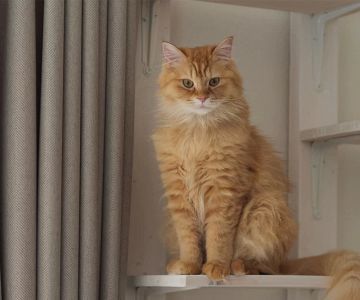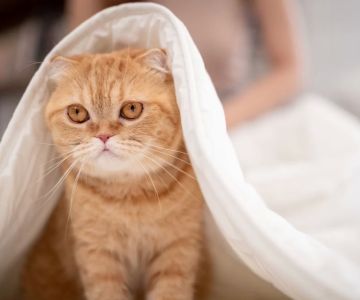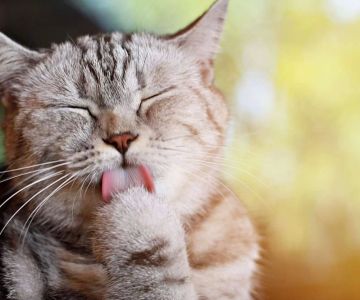Why Is My Cat Shedding in Clumps?
If you’ve noticed that your cat is shedding excessively in clumps, you're not alone. As a cat owner myself, I’ve had my fair share of moments where I’ve found large tufts of fur all over the house, and it can be alarming. While it’s normal for cats to shed, excessive shedding in clumps is a different story. It often signals an underlying issue that needs attention. Understanding why this happens and what you can do about it is essential to ensuring your cat's overall health and well-being.
Normal Shedding vs. Excessive Shedding
Shedding is a natural part of a cat’s life cycle. Just like humans lose hair regularly, cats shed old fur to make room for new growth. However, shedding in clumps is not typical and could indicate something more serious. Most cats shed during seasonal changes, particularly during spring and fall, but this shedding is usually light and even. When fur comes off in large clumps, it may point to health issues such as allergies, skin infections, or even stress.
Common Causes of Excessive Shedding in Clumps
1. Allergies
One of the most common causes of excessive shedding in clumps is allergies. My own cat, Whiskers, started shedding in larger amounts and in clumps after developing an allergy to certain types of food. Allergies to certain proteins in food or environmental allergens, like pollen or dust mites, can cause itching and irritation. Cats often lick and scratch excessively to soothe themselves, which leads to hair falling out in large chunks. If your cat is shedding excessively and has noticeable skin irritation or hot spots, allergies might be the cause.
2. Fleas and Parasites
Fleas and other parasites are another potential culprit for clumping fur. Flea infestations can cause intense itching, and when a cat scratches excessively, their fur falls out in large patches or clumps. I remember when my friend’s cat had fleas, and the shedding was so bad it looked like the cat was losing fur in chunks. If you suspect fleas, check your cat for small, dark specks of flea dirt, which are the droppings of fleas. You may also notice that your cat’s skin is irritated, red, or inflamed from scratching.
3. Poor Grooming Habits
Cats are generally very clean animals, but some may neglect grooming, especially if they are older or suffering from arthritis or dental issues. When a cat doesn’t groom properly, their fur can become matted, leading to clumps of fur shedding. I noticed this with my senior cat, Bella, who had a difficult time keeping up with her grooming as she aged. The mats would pull at her fur, causing it to break off in larger patches. Regular grooming can help prevent this problem, and it’s essential for cats with long fur.
4. Skin Infections or Dermatitis
Skin infections, including bacterial or fungal infections, can also cause your cat to shed excessively in clumps. These infections are often accompanied by symptoms like redness, scabs, or open sores. My cat, Tom, had a fungal infection once, and his shedding increased significantly. It wasn’t until we took him to the vet that we discovered the infection was the root cause. If your cat’s skin looks inflamed or irritated, or if they are excessively licking or biting at certain areas, a skin infection may be the cause of the shedding.
5. Hormonal Imbalances
Hormonal imbalances, such as those caused by thyroid problems, can also lead to excessive shedding. Cats with hyperthyroidism, for example, may experience rapid hair loss, including clumping, as a side effect. I encountered this situation when my cat, Daisy, started shedding in large clumps and became noticeably thin. A visit to the vet revealed that her thyroid levels were off, which contributed to the shedding. If your cat is losing weight or showing signs of increased thirst and appetite, it’s worth getting a blood test to check their thyroid function.
6. Stress and Anxiety
Believe it or not, stress and anxiety can lead to excessive shedding in cats. Cats are sensitive creatures, and when they experience stress—whether it’s from a move, a change in routine, or the presence of another pet—they may begin shedding more than usual. This was the case with my cat, Gizmo, who started shedding profusely after we brought home a new puppy. He was anxious and began losing fur in large patches. Reducing stress and providing a calm, stable environment for your cat can help mitigate this issue.
How to Manage Excessive Shedding in Clumps
1. Regular Grooming
One of the best ways to manage excessive shedding in clumps is to groom your cat regularly. Depending on the length of your cat’s fur, brushing daily or several times a week can help remove loose hair before it falls out in clumps. For long-haired cats, regular brushing is essential to prevent mats and tangles, which can cause hair loss in clumps. My long-haired cat, Luna, enjoys being brushed, and it’s a great way to bond while keeping her fur in good condition. Plus, it helps prevent the hairballs that come from all that shedding!
2. Address Allergies
If your cat is shedding in clumps due to allergies, it’s important to address the underlying cause. This may involve changing their food or taking steps to reduce exposure to allergens in the environment. If you suspect food allergies, consult with your vet about trying a special hypoallergenic diet. For environmental allergies, using air purifiers or regularly cleaning your home can help. My cat, Whiskers, benefited greatly from a diet change, and her shedding reduced dramatically after a few weeks.
3. Veterinary Care for Skin Infections
If your cat is shedding due to a skin infection or parasites like fleas, a trip to the vet is essential. Flea treatments, antifungal medications, or antibiotics may be necessary to treat the underlying issue. Flea prevention should also be a part of your regular routine to avoid future infestations. As I learned with Tom, treating a skin infection early can prevent further fur loss and other complications.
4. Manage Stress
If stress is the cause of your cat’s shedding, it’s important to reduce anxiety and provide a calm, predictable environment. You can try using calming pheromone diffusers or sprays, which mimic the natural calming scents that cats produce. I used a pheromone diffuser in my home when Gizmo was stressed, and it helped him feel more at ease. Offering plenty of attention, playtime, and a safe space for your cat to retreat can also help ease anxiety.
When to Visit the Vet
If you notice that your cat’s shedding is excessive and accompanied by other symptoms such as skin irritation, bald patches, weight loss, or changes in appetite, it’s important to seek veterinary care. A professional can perform tests, such as blood work or skin scrapes, to determine the exact cause of the shedding and recommend an appropriate treatment plan.
Excessive shedding in clumps can be a sign of a variety of health issues, but with the right care and attention, it’s often something that can be managed effectively. Whether it’s adjusting your cat’s diet, improving their grooming routine, or addressing health problems, there are many solutions to reduce shedding and keep your cat’s coat healthy and beautiful.










